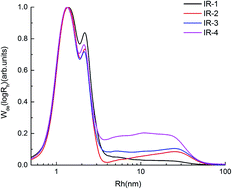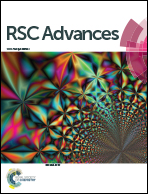Characterization of multi-scale structure and thermal properties of Indica rice starch with different amylose contents
Abstract
Fully understanding the relationship between multi-scale structure and thermal properties of rice starch is important for starch-based food processing. Multi-scale structures of Indica rice starch were studied from molecules to aggregation structure. Gel-permeation chromatography (GPC) and high-performance anion-exchange chromatography (HPAEC) both show that the amylopectin from debranched rice starch exhibits bimodal distributions. Compared with amylose-rich rice starch, amylopectin-rich rice starch had the highest molar- and weight-based ratio of fraction fa′ (DP 6–12) and lower molar-based ratios of fractions fb′3 (DP ≥ 37). X-ray diffraction (XRD) and small angle X-ray scattering (SAXS) confirm that amylopectin-rich starch has the highest crystallinity and scattering intensity. Differential scanning calorimetry (DSC) results show that amylopectin-rich starch has the highest onset and peak gelatinization temperatures; however, there is no significant difference in enthalpy, which may be due to the irregular double helix. Rapid visco-analysis (RVA) shows amylose-rich starch has a higher final and setback viscosity, which may be due to amylose molecule entanglement in starch gel and higher retrogradation ability.



 Please wait while we load your content...
Please wait while we load your content...